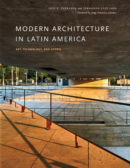Articles by Reviewed by
Modern Architecture in Latin America: Art, Technology, and Utopia
Whose Continent Is It Anyway? Eurocentrism Is Hard to Break.
Read More
Copyright ©2025. All Rights Reserved BNP Media.
Design, CMS, Hosting & Web Development :: ePublishing
